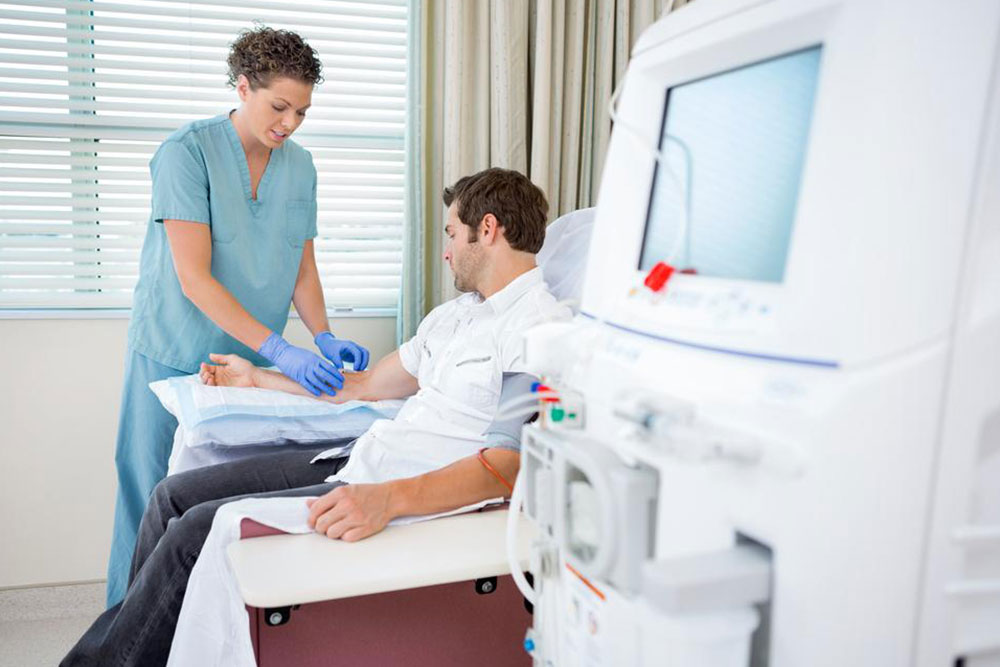Comprehensive Guide to Kidney Dialysis: Life-Saving Therapy and Its Critical Role in Kidney Health
This comprehensive article explores the critical role of kidney dialysis in managing severe kidney failure. It details the different types of dialysis, their procedures, and lifestyle impacts, emphasizing early detection and effective management. Understanding these vital aspects can empower patients and caregivers to make informed decisions and improve quality of life with ongoing treatment.

Understanding Kidney Dialysis: An In-Depth Overview
Kidney health is vital for maintaining overall well-being, as these organs perform essential functions such as filtering waste products, regulating fluids, and balancing electrolytes. However, various health conditions can impair kidney function, leading to dangerous health scenarios. When the kidneys fail to perform these critical tasks, kidney dialysis becomes a life-sustaining intervention. Often viewed as a last resort, dialysis is actually a sophisticated therapy that helps to prolong life and improve the quality of life for individuals with severe kidney impairments. This comprehensive guide aims to explain everything you need to know about kidney dialysis, its importance, types, and how it can help patients lead healthier lives despite chronic kidney disease.
Kidney failure, also known as renal failure, occurs when the kidneys can no longer filter waste products and excess fluids effectively. This condition can develop gradually over years or suddenly due to acute injury. The primary function of the kidneys is to maintain a delicate balance—removing toxins and excess water while conserving essential nutrients. When this balance is compromised, toxins build up in the body, leading to symptoms such as fatigue, swelling, nausea, and even life-threatening complications. Recognizing the significance of proper kidney function underscores why dialysis is essential for so many patients worldwide.
According to health statistics, over 14% of the global population suffers from some stage of kidney disease, with many progressing towards end-stage renal failure. When kidney function drops below approximately 10%, dialysis becomes not just beneficial but vital for survival. This treatment helps filter out waste, excess fluids, and dangerous toxins that the failing kidneys can no longer manage. Without dialysis, the accumulation of these substances can lead to severe health issues, including coma and death. In emergency situations, dialysis also plays a crucial role in removing medications or toxins rapidly from the bloodstream.
Types of Dialysis Procedures and Their Applications
Intermittent Hemodialysis (IHD): This is the most common form of dialysis where blood is removed from the body, cleaned externally via a machine, and then returned through a catheter. Usually performed three times a week for several hours each session, IHD is often administered in hospitals, specialized clinics, or at home with proper medical supervision and equipment.
Peritoneal Dialysis (PD): This method uses the patient's peritoneal membrane in the abdomen as a natural filter. A sterile dialysis solution is infused into the abdominal cavity through a catheter, allowing waste products to diffuse into the solution. After a designated period, the solution containing waste is drained. PD can often be performed overnight in a home setting, providing greater flexibility and independence for patients.
Continuous Renal Replacement Therapy (CRRT): Designed mainly for critically ill patients in intensive care units, CRRT provides continuous, gentle filtration over 24 hours. This form of dialysis is particularly suitable for patients with unstable blood pressure or severe fluid overload, helping to stabilize their condition until their kidney function recovers or additional treatment decisions are made.
Impact on Lifestyle and Effectiveness of Dialysis
While dialysis can’t exactly resemble the natural functions of healthy kidneys, it significantly extends life expectancy and allows individuals to maintain a certain quality of life. Proper management involves dietary restrictions—such as limiting fluids, sodium, and potassium—as well as adjustments to physical activity. Many patients adapt to these lifestyle modifications, enabling them to lead active, fulfilling lives despite their condition. Regular medical check-ups, adherence to prescribed treatment schedules, and lifestyle adjustments are key to maximizing the benefits of dialysis.
Recognizing When Dialysis is Necessary
Early detection of kidney failure can be challenging because initial symptoms are often subtle or nonspecific. Common early warning signs include increased urination, persistent fatigue, nausea, blood in the urine, swelling in the limbs, itchy skin, and shortness of breath. If these symptoms persist or worsen, prompt consultation with a healthcare provider is crucial. Chronic kidney disease (CKD) often results from conditions such as uncontrolled hypertension, diabetes, or autoimmune disorders, which damage the delicate structures of the kidneys over time. Additionally, complications like anemia—due to a decrease in erythropoietin production—are common in advanced stages, further complicating the patient’s health.
Maintaining kidney health involves regular monitoring of kidney function, blood pressure, blood sugar, and electrolyte levels. Lifestyle choices such as a balanced diet, proper hydration, avoiding nephrotoxic substances, and managing underlying conditions can slow disease progression. If symptoms of deterioration arise, treatments like dialysis become indispensable to prevent life-threatening consequences.





